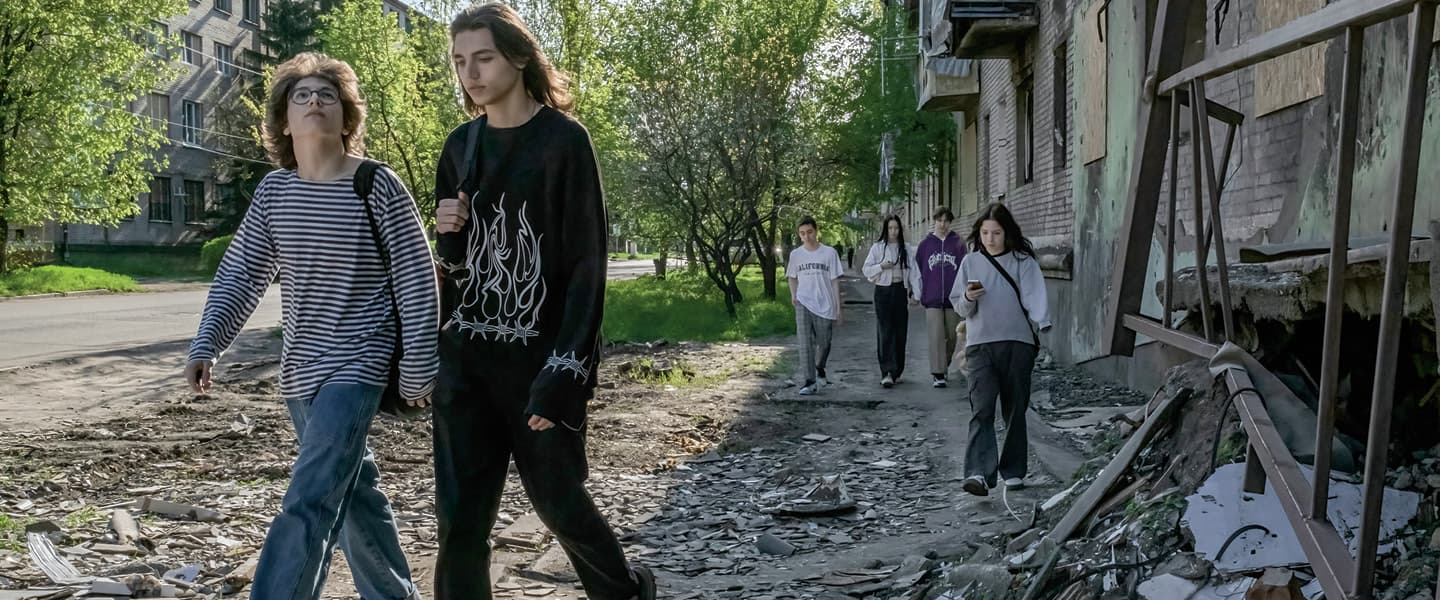The yawning crater, carved by a Russian missile strike and flooded with water, cuts a jagged path through a city street. A clique of teenagers passing by finds it funny.
“Look, it’s our local pond,” says Denys, 15. “We could dive in for a swim.”
With backpacks looped over their shoulders, the teens walk the streets
of Sloviansk, a frontline town in eastern Ukraine. They slip past soldiers in full combat gear, headed to the trenches about 20 miles away. Military trucks rumble past.
The kids are living their teenage years in a holding pattern because of the war that rages around them. They have nothing to do. No prom, graduation ceremonies, movie theaters, or parties. They mostly handle the hardships of war, and the terror of Russian attacks, with humor. They make fun of everything around them, including one another.
A group of teens pass by a large crater in the street. It was caused by a Russian missile strike and is filled with water. They find it funny.
“Look, it’s our local pond,” says Denys, 15. “We could dive in for a swim.”
The teens are walking the streets of Sloviansk, a town in eastern Ukraine that’s on the front lines of the war. They pass soldiers in full combat gear, headed to the trenches about 20 miles away. Military trucks rumble past.
The kids’ teenage years are in a holding pattern because of the war. They have nothing to do. No prom, graduation ceremonies, movie theaters, or parties. They use humor to handle the hardships of war and the fear of Russian attacks. They make fun of everything around them. This includes one another.

